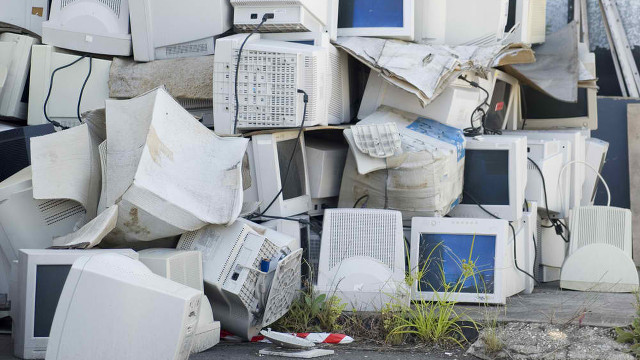SUMMARY
This is AI generated summarization, which may have errors. For context, always refer to the full article.

MANILA, Philippines – Christmas is the season for new gadgets and gizmos. It’s the time when people use part of their 13th month pay to buy the latest smartphone or make sure to include a brand-new tablet in their Christmas wishlist.
This hi-tech holiday mania is, however, spiking the generation of e-waste, or waste that comes from discarded devices that can harm people and the environment.
E-waste includes worn cell phones, dead computers, broken gadgets, spent batteries and lamps, old TVs, DVD players, functioning but outdated cameras, game consoles, and phones and accessories.
According to the United Nations Environment Programme (UNEP), “e-waste is one of the fastest growing waste streams in developed as well as in developing countries, generating up to 50 million tons annually with only a 10% recycling rate.”
E-waste contain toxic materials and substances like arsenic in light emitting diodes; cadmium in printer inks; toners and rums; lead in batteries; mercury in fluorescent lamps, relays, and switches; chromium in data tapes and floppy disks.
An average computer contains 18% toxic metals like lead, cadmium, chromium, and mercury, according to the UNEP.
These toxics can reach humans, water sources, and the environment when unwanted electronics are thrown in trash bins or the dump. Burning or recycling them improperly can also release the toxic chemicals.
But holiday shoppers need not contribute to e-waste. Green group EcoWaste Coalition thinks it’s possible to balance the need for gadgets and the imperative of protecting the environment and human health.
One question to ask this Christmas is whether we really need that new gadget in the first place, and if it may be wiser to make the most of what you already have.
Here are 10 ways to reduce your holiday e-waste:
1. Don’t give in to the temptation of that shiny new gizmo. Try extending the life of your existing electronics instead of buying new ones. Consider whether you truly need to get new ones before rushing to buy the latest stuff.
2. Have broken electronics repaired to give them a new lease of life. Electricians and technicians can almost fix everything for reasonable fees.
3. Have the outdated component of an electronic product refurbished or upgraded instead of buying an entirely new replacement.
4. Never throw unwanted electronics along with ordinary trash. Pass them on to relatives and friends in need for reuse. Trust in the old adagé: one person’s trash is another person’s treasure.
5. Collect spent household batteries, cellphone batteries, fluorescent lamps, and empty ink cartridges. Label them and safely store in a covered container kept out of reach of children and pets.
6. Donate usable electronics like computers and laptops to charities and schools or give them to your neighbors.
7. Visit the manufacturer’s website or call the dealer to find out if they have a takeback program or scheme for your discarded electronics.
8. Earn from your e-waste. List it on sulit.com.ph or consider appropriate recycling options. Contact the Department of Environment and Natural Resources – Environmental Management Bureau (DENR-EMB) for advice on environmentally-safe recycling options.
9. If you really need to spend for new electronics, choose items with less hazardous substances, greater recycled content, higher energy efficiency, longer life span, and those that will produce less waste. If the device is battery-operated, buy rechargeable instead of disposable batteries. Go for products with good warranty and takeback policies.
Some resources that may come in handy:
- Greenpeace International’s Guide to Greener Electronics – Ranks manufacturers of computers, mobile phones, TVs, and game consoles according to their policies on toxic chemicals, recycling, and climate change.
- RoHS logo – An indicator that a product complies with the European Union’s Restriction of Hazardous Substances, which restricts the use of 6 hazardous materials in manufacturing: cadmium, hexavalent chromium, lead, polybrominated biphenyls, and polybrominated biphenyl ethers.
- Energy Star label – Indicates that the product is energy efficient, conserving electricity use, and reducing greenhouse gas emissions linked with energy production and use.
10. Take good care of your electronic device – whether it’s brand new, refurbished, or hand-me-down – as sound maintenance will prolong its lifespan. Read the instruction manual carefully and get acquainted and trained on an easy fix-it-yourself guide. – Pia Ranada/Rappler.com
Electronic waste image from Shutterstock
Add a comment
How does this make you feel?
There are no comments yet. Add your comment to start the conversation.